Contents
Many novice gardeners hesitate to start growing vegetables in a greenhouse, considering it a difficult and troublesome task. In fact, it is not much more difficult than growing a plant in the open field.
One of the most important stages in growing greenhouse tomatoes is planting seedlings. Mistakes made when transplanting to a permanent place can significantly affect the yield.
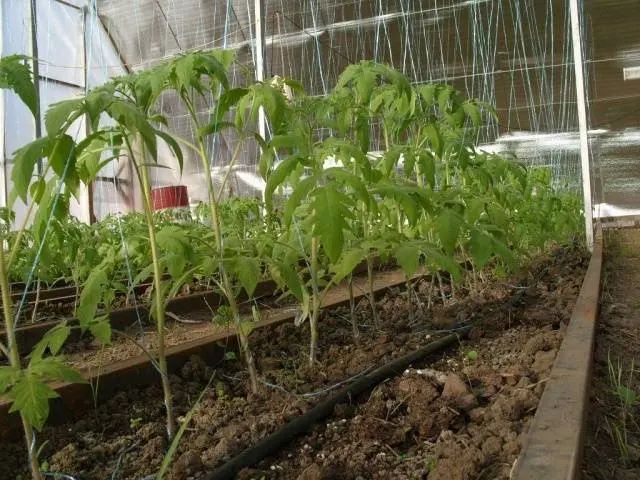
Types of shelters
Most often, the following types of shelters are used for growing tomatoes:
- Capital glazed greenhouses, usually heated;
- Polycarbonate greenhouses, can be heated or without heating;
- Covered with polyethylene film, with or without heating;
- Temporary shelters, as a rule, use a film, heating is not used.
The preferred type of greenhouse is determined based on the goals. For example, for the winter cultivation of tomatoes, a glazed or polycarbonate heated greenhouse is used. To save tomato seedlings from spring frosts, use a temporary film shelter.
To reduce costs, to temporarily shelter tomato seedlings from night frosts, plastic wrap is stretched over arcs. You can use metal or plastic. The film is stretched over arcs dug into the ground, fixed. It is advisable to cover the ends of the film with soil so that the film is not blown away by a gust of wind. When stable warm weather is established at night, the shelter is removed and put away for storage until autumn.
Planting dates for seedlings
To determine when to plant tomato seedlings in a greenhouse, one general rule must be taken into account – the soil temperature must be at least 15 degrees Celsius.
This is not true, because the roots of tomatoes will develop at a depth of about 35-40 cm, the temperature of this layer must be measured.
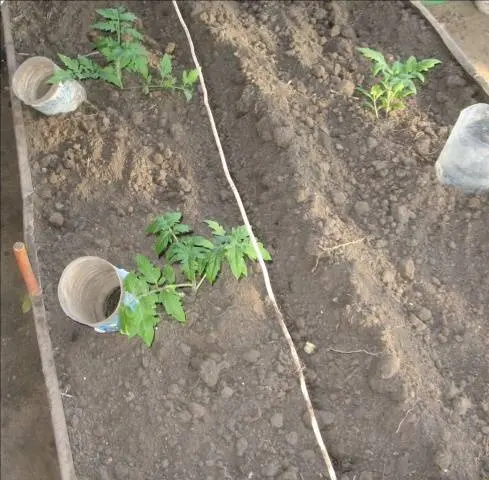
The timing of planting tomato seedlings in a greenhouse depends not only on the region, but also on the number of sunny days. In cloudy weather, the earth warms up much more slowly. To speed up the time for planting tomato seedlings in the greenhouse, you can additionally warm the soil. For this, several methods are used.
If a heated greenhouse is used, it is not difficult to warm up the soil, but it must be borne in mind that it is impossible to get flowering and fruiting of tomatoes under conditions of short daylight hours. If you plant grown seedlings in a greenhouse when the daylight hours are still short, it is necessary to provide additional illumination to the tomatoes, the total number of light hours should be at least 14 per day.
To warm the soil in an unheated greenhouse, you can cover the soil with a black film. Black color attracts the sun’s rays, so you can raise the temperature by 4-5 degrees. Also for these purposes, you can overlay the greenhouse with bottles of water. Water retains heat longer, gradually giving it away to the environment. Using this method can increase the temperature in the greenhouse by 2-3 degrees.
Another way is to spread wet straw or other organic matter on the soil. During the decay of organic matter, heat is released. In this way, you can increase the temperature of the soil in the greenhouse by 3-6 degrees, depending on the amount of organic matter.
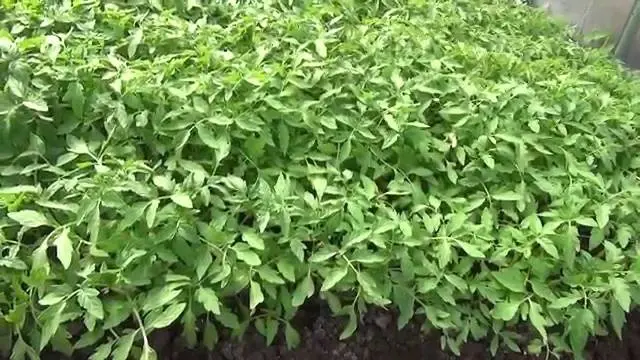
Night temperatures should be taken into account, which can significantly cool the air in the greenhouse. For normal development, tomatoes need a temperature of about 18 degrees. The planted tomatoes will endure a short-term cooling down to 12-15 degrees without loss, but lower temperatures can cause irreparable harm to the planted tomatoes.
Greenhouse preparation
The preparation of the greenhouse for the spring planting of tomato seedlings must be started in advance. Advice! It is advisable to dig up the soil in the greenhouse in the fall and apply complex fertilizers, as well as treat the land with pesticides, destroying harmful insects and pathogens of infectious diseases.
If the greenhouse cover is not used for the first season, be sure to thoroughly wash it both inside and out, using disinfectants. From the inside, pathogens of various diseases could remain on the walls of the greenhouse, which later, together with condensate, can get on the leaves of tomatoes and cause unpleasant consequences.
Outside, the coating must be washed to clean it of dust and dirt, which significantly reduce the amount of sunlight reaching the tomato seedlings. If tomatoes do not receive enough sunlight, the growth and development of bushes slows down, and the formation of ovaries stops.
Before planting tomato seedlings in a greenhouse, you should check the serviceability of windows and doors, if necessary, lubricate the moving parts. In wooden greenhouses, after wintering, they can become damp and increase in the size of the base of the window frames, they must be repaired and dried. If you cannot open them, you can remove part of the cover to open access to air.
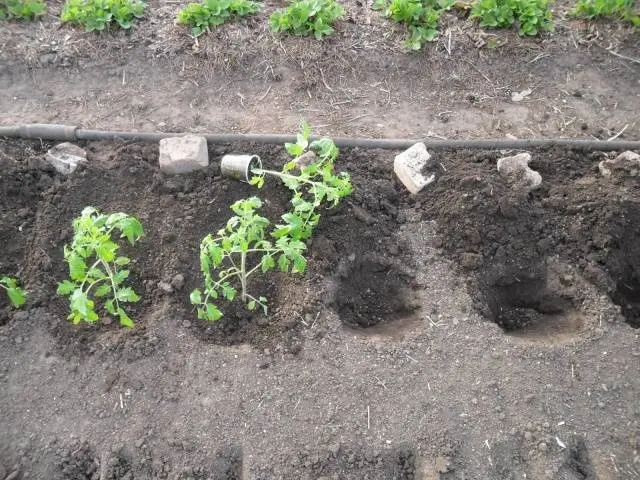
soil in the greenhouse
Particular attention in preparing the greenhouse for planting tomatoes must be given to the soil. Tomatoes prefer light soils, with acidity closer to neutral. Soil with high acidity must be treated with deoxidizing substances, for example, lime, dolomite flour, ash. In addition, the ash contains a large amount of potassium, which is necessary for tomatoes.
Often, when laying a greenhouse, the top layer of soil is removed to a depth of 40-50 cm. Straw or manure is laid in the resulting depression, which, decomposing, raise the ambient temperature by 2-4 degrees.
The first symptoms of carbon dioxide poisoning are dizziness, burning in the eyes. Feeling dizzy, you need to leave the room as soon as possible. To avoid poisoning, it is necessary to regularly ventilate the greenhouse.
If no fertilizer was applied in the fall, it is imperative to add nutrients when planting tomato seedlings. You can use ready-made complex fertilizers for seedlings. They can be applied as a dry substance in the hole, by watering under the root or by spraying the green parts of the tomatoes. Many gardeners oppose the use of chemicals when growing tomato seedlings, preferring natural fertilizers. From natural nutrients use:
- Humus – contains a significant amount of nitrogen;
- Manure is a source of nitrogen compounds, magnesium, sulfur, calcium;
- Ash – contains a large amount of potassium, manganese, magnesium;
- Tinctures of organic substances – contain all the necessary nutrients.
Natural fertilizers are applied to the planting hole, mixed with soil to avoid burning the roots of tomatoes. You can use several fertilizers at the same time.
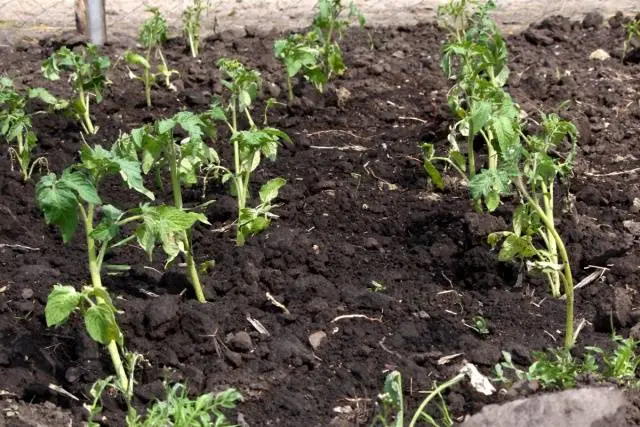
If tomatoes have been grown in the same soil for several years in a row, it is advisable to change the top fertile soil layer. The depth of this layer is about 40 cm. To avoid this complex process, you can sow the greenhouse for one season with green manure.
Preparation of seedlings
Proper preparation of tomato seedlings for planting in a greenhouse is very important. Unprepared seedlings will require a lot of time to recover, significantly delaying fruiting.
To reduce stress from transplanting, it is necessary to harden off tomato seedlings before the stud system is disturbed. For this, tomato seedlings are placed for 1-2 weeks in conditions as close as possible to those in which the tomatoes are to grow. This is especially important for seedlings that were grown in an apartment on the windowsill.
If possible, tomato seedlings are placed in a greenhouse where they will grow for several hours, gradually increasing the residence time. After one week, it is advisable to leave the tomatoes overnight so that the seedlings can get used to lower temperatures at night.
After 3-4 days, the plant will get used to the bright light, the shading coating can be removed.
If it is not possible to place tomato seedlings in advance in the greenhouse, you can start hardening in the apartment using a balcony or other well-lit room with low air temperature.
seedling age
The ideal age of seedlings for planting in the ground depends on the varietal characteristics of fruiting tomatoes. Experienced growers recommend the following terms:
- Ultra-early tomatoes – 25-30 days;
- Early maturing – 30-35;
- Early and middle 35-40;
- Middle-late and late 40-45.
It is often difficult for beginner gardeners to determine the age of purchased tomato seedlings, sometimes the tomato variety does not match the declared one. In this case, you can focus on the number of leaves.
If it has flowering buds, it means that the tomato seedlings have grown a little, the adaptation of such plants is difficult.
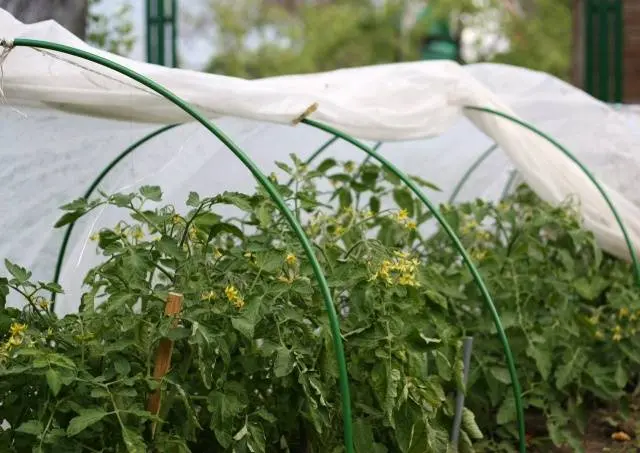
Sometimes it is not possible to follow the recommended disembarkation dates exactly. In this case, you need to follow the rule: “Better sooner than later.” Planted earlier than the recommended time, tomatoes get used to new conditions quickly enough, easily restore intensive growth.
Overgrown seedlings of tomatoes require a whole range of measures aimed at restoring seedlings and facilitating adaptation in a new place.
Disembarkation rules
There are two ways to plant tomato seedlings – in the mud and in dry soil. For the first method, the holes are filled with water, the seedlings are placed in a hole filled with water, sprinkled with soil. Tomato seedlings continue to be poured until the soil becomes homogeneous, all lumps should dissolve.
For the second method of planting tomato seedlings in a greenhouse, the holes are left dry, watered with an earthen ball in which tomato seedlings were grown before transplanting. Watering tomatoes is carried out a week after transplantation. The advantage of this method is that dry soil allows more oxygen to pass through, which is necessary for the development of the tomato root system.
In any case, it is advisable to water the seedlings in the greenhouse only with warm water, the temperature of which should not be lower than 15 degrees. Irrigation with cold water can significantly reduce the temperature of the soil. A drip irrigation system can solve this problem. By the time the water reaches the roots of the tomatoes, it will have time to heat up.
Holes in the greenhouse are prepared in advance about a week before planting. The depth of the hole should correspond to the root system of the seedlings. If a tomato about 40 cm long is planted, you can deepen the stem by 10-15 cm, the hole should be about 40 cm deep. In this case, the seedlings are planted vertically. The width can be 20-30 cm.
If overgrown tomato seedlings are planted in the greenhouse, more than 40 cm long, it is recommended to position the stem of the plant obliquely in order to form additional roots. In this case, the hole is made smaller, but wider. Enough 30 cm deep and 40 cm wide.
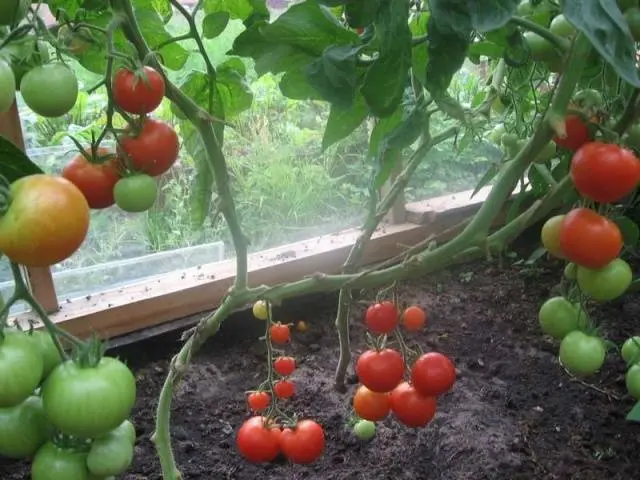
The distance between the holes is determined, given the size of an adult tomato bush. Tomatoes planted too close will produce significantly less fruit. If you place the bushes too far, the land in the greenhouse will be wasted.
Recommended distance for different varieties of tomatoes:
- Undersized – 40 cm;
- Medium – 45 cm;
- Tall – 50-60 cm.
Holes are made in a checkerboard pattern, not forgetting to leave a passage through every two rows. To care for tomatoes, a distance of 60 cm is sufficient.
You should not place the holes too close to the edge of the greenhouse; adult tomatoes will not have enough room to grow.
The rules for planting tomato seedlings in the ground are easy to follow, the main thing is desire and attentive attitude to plants. All the efforts made will pay off with an excellent, early harvest of tomatoes.









